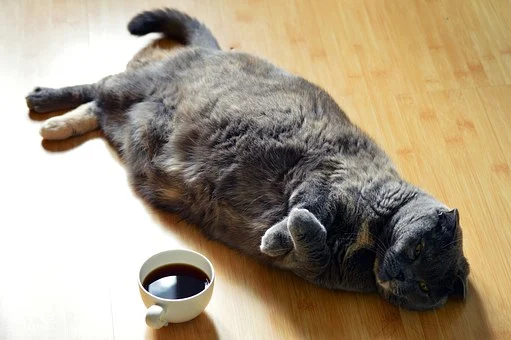Obesity occurs when calorific intake exceeds calorific use over a prolonged period of time. This leads to our pets having an excess of body fat which can impair their health, welfare and quality of life. The good news is 95 % of obesity cases are treatable with a controlled calorific intake.
The health risks associated with obesity

Obesity can have a serious impact on our pets health and is associated with medical conditions such as;
- Arthritis
- Heart disease
- Diabetes
- Liver disease and
- Increased anaesthetic risk
It can also impact our pets’ welfare as it can be extremely debilitating to them and can affect them for long periods
What Body Condition Score is your pet?

The best way to asses your pets weight is through Body Condition Scoring
- Is it difficult to feel his ribs or spine?
- Is it difficult to see your dog’s waist?
- Is his abdomen sagging?
- Does his face look more round with larger cheeks
How can my pet reach its ideal weight?
- The whole family must follow the same rules
- Cut out all of his snacking or substitute with healthy treats like a carrot stick or slice of apple
- Reduce caloric intake – We can help with a calorie-controlled diet
- Aim for your pet to lose about 15% of body weight over a period of 16-18 weeks
- Increase meal frequency – split the daily amount of food into two or three meals. This will help alleviate hunger and burn energy.
- Exercise is a crucial part of any weight loss regimen (and it might just do you some good as well). If your pet is unfit, start with gentle on-lead walking – say for 15 minutes twice a day. Gradually build this up over a month to at least an hour of daily exercise and include off-lead running when possible.


